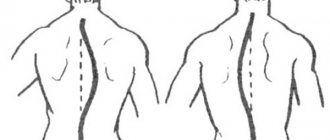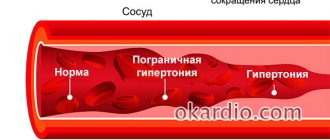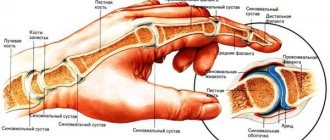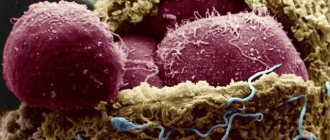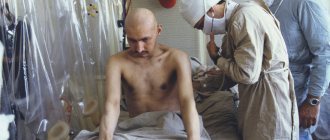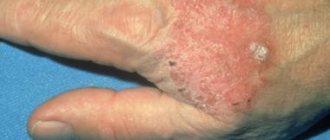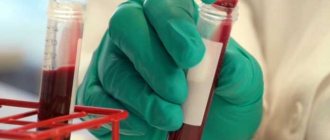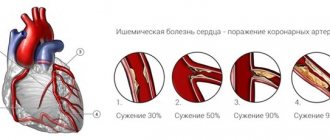Behçet's disease belongs to rare diseases from the group of vasculitis, in which the vascular system is damaged, ulcers and erosions appear in the genital area and on the oral mucosa, and uveitis develops. In especially severe cases, the disease affects the joints, brain and internal organs. This pathology was discovered by Hippocrates in the 5th century BC, but the Turkish dermatologist Haluci Behcet first spoke about it in 1924, after whom the disease was named.
[contents]
Behcet's syndrome is most common along the Silk Road, from Central Asia to China. Moreover, most patients live in Turkey (up to 400 cases for every 100 thousand people), while in Europe the disease is diagnosed 150 times less often. According to medical statistics, this disease occurs much more often in the stronger sex of the Middle East than in women (5:1). In Europe, the situation is completely mirrored, and Behcet's disease is diagnosed in men many times less often than in women. The pathology is also characterized by racial differences. It is most often diagnosed in representatives of the Asian and Caucasian types. The process is very difficult, almost a quarter of patients die within 5 years after diagnosis of the pathology. The cause of death is usually a rupture of a coronary or pulmonary artery or thrombosis.
As a rule, among those affected, mainly people aged 25-30 years and older, but sometimes the syndrome can affect even a child. Statistics show that Behçet's disease in preschool and adolescent children occurs in no more than 2-3% of cases. Symptoms that make it possible to identify the syndrome in a child usually appear in younger schoolchildren, but in medicine there are isolated cases of the development of pathology in newborns or children under 3 years of age. Neonatal Behcet's disease manifests itself only in lesions of the mucous membranes and skin and disappears 1.5-2 months after birth.
Causes and symptoms
The reasons for the development of the pathology are specifically unknown, but experts assure that the development of an autoimmune process can be triggered by:
- chronic infections - herpes simplex virus and all kinds of streptococci;
- genetic predisposition;
- regular drinking of strong drinks for more than 5 years;
- intoxication of the body.
Behçet's disease has a wide variety of symptoms. Moreover, pathological changes can be seen in almost all body systems.
Mucous membranes and skin:
- Sometimes the disease can be confused with symptoms of stomatitis. Small aphthae filled with colorless liquid appear in all visible areas. After some time, they open, and in their place ulcers appear, which can unite, forming large areas of damaged mucosa. Aphthous stomatitis lasts about 30 days, relapses occur every 3-4 months.
- Recurrent genital ulcers form on the cervix, vulva or vagina in women, and on the scrotum and glans penis in men. The affected areas cause pain. In this case, small ulcers can also connect, forming a continuous erosive zone. After the ulcers heal, scars remain at the site of their localization.
- Erythema nodosum - painful red formations - appears on the legs and arms, and an acne-like rash appears on the body and limbs.
Eye lesions appear 2-3 weeks after the development of aphthous stomatitis. They are characterized by:
- conjunctivitis;
- papilledema;
- uveitis;
- keratitis;
- glaucoma;
- in especially severe cases, the optic nerve atrophies and the patient becomes completely blind.
Vascular disorders, according to the results of the examination, are manifested by inflammatory pathologies that first cause stenosis, and then necrosis of veins and vessels. These violations manifest themselves:
- arterial aneurysm;
- thrombosis of large and small vessels;
- thromboembolism of the pulmonary arteries.
Neurological manifestations have very severe complications and can appear 1-8 years after the first symptoms. Meningoencephalitis and cerebral infarctions develop. Patients develop dementia, loss of balance, fragmented memory loss or worsening, seizures and partial paralysis. Language proficiency and free orientation in space are fully preserved.
In the gastrointestinal tract, painful changes are manifested by the appearance of ulcers in the small intestine, but there are cases when Behcet's disease was diagnosed in patients with erosions in the esophagus.
When joints are affected, inflammation most often occurs in the knee and ankle joints, and somewhat less frequently in the wrist and small joints of the hand. Among all pathologies, articular ones make up about 20%.
Causes of damage to the body
Although the role of each of these factors has not been fully clarified, most data allow us to classify this disease as an autoimmune disease. Viral infections (herpes, influenza) and poisoning with toxic compounds can serve as a trigger.
There are known cases of the development of the disease with regular alcohol abuse, as well as after tonsillitis.
There is a genetic and ethnic predisposition. They are associated with defects in chromosomes in areas that are responsible for the synthesis of a protein - tumor necrosis factor.
We recommend reading the article about vasculitis. From it you will learn about the classification of the disease, as well as the most common pathologies.
And here is more information about the treatment of vasculitis with folk remedies.
Diagnosis of pathology
There is no specific marker of the disease; it is determined by the totality of symptoms. The syndrome can be diagnosed by a rheumatologist who, if necessary, will involve specialists from related professions in the treatment process. The doctor will analyze your symptoms and take a family history. If Behçet's disease is suspected, treatment is not prescribed until a pathergic test is performed to confirm the diagnosis. In patients with pathology, after a day (sometimes two), a rash measuring 3-10 mm appears at the injection site.
Laboratory tests also play an equally important role in the diagnosis of Behçet’s disease:
- immunological tests;
- general and biochemical blood test;
- coagulogram;
- radiography of joints;
- examination of synovial fluid.
Treatment of patients of different ages
The basis of drug therapy for vasculitis is corticosteroid drugs. They are prescribed for increased activity of the inflammatory process, the spread of damage to the eyes, nervous system, joints, and internal organs.
In addition, the following medications are used:
- immunosuppressants – Cyclophosphamide, Azathioprine,
- Colchicine for arthritis and erythema,
- Thalidomide in case of massive ulceration of the oral mucosa,
- anticoagulants - Aspirin, Warfarin.
Cyclophosphamide for Behçet's disease
Treatment of Behcet's syndrome
With this pathology, symptoms and treatment depend on the severity of the disease. Since Behcet's disease is polysymptomatic, therapy should be comprehensive. A patient with signs of the syndrome is admitted to a hospital and observed under the strict supervision of professionals. The main treatment methods are aimed at:
- suppression of pathogenic products that support the disease;
- prolongation of the remission stage as long as possible;
- prevention of relapses and complications;
- inhibition of the development of damage to internal organs;
- uveitis treatment;
- improving the patient's quality of life.
The basis of treatment is traditional drug therapy, but methods such as plasmapheresis, hemosorption, UVB and ILBI can also be used, which help improve the body's protective functions. The medication course includes the prescription of antiviral and antibacterial agents, multivitamins, immunosuppressants, anti-inflammatory and anti-gout drugs. If there is no dynamics, Prednisolone can be added a couple of months after the start of treatment, and cytostatics another month later.
Local treatment includes:
- rinsing the mouth and treating ulcers with antiseptics;
- the use of ointments with Hepatrombin, Indomethacin, glucocorticoids;
- subconjunctival administration of Dexamethasone.
Alternative methods of medicine in the treatment of Behçet's disease can alleviate the patient's condition, so you should not forget about them:
- It would be useful to rinse the mouth or irrigate the genital mucosa with infusions of medicinal herbs: chamomile, calendula, string.
- Ulcers can be treated with a composition of honey (80 g), fish oil (30 g), xeroform powder (3 g). The components are mixed until smooth and applied to the affected areas.
- Alum solution has long been used to apply to ulcers on mucous membranes.
Symptoms of Behçet's disease
Treatment of the syndrome and future prognosis largely depend on the initial manifestations of the clinical picture that worry the patient. After all, as already mentioned, pathology is often accompanied by many other diseases, which, in turn, give certain complications. That is why the patient needs high-quality diagnosis and comprehensive treatment not only of Behçet’s disease itself, but also of accompanying defects.
First of all, it is worth saying that ulcers that appear during illness in the mouth and on the skin are always recurrent. Soon the patient develops the same lesions, but on the mucous membranes of the genital organs. As the defect develops, the ulcers become more extensive; in addition, they can become infected, fill with pus and leave deep scars in their place.
In addition, patients complain of:
- severe visual impairment;
- pain, pain and burning in the eyes;
- the appearance of fog in vision;
- severe migraines.
Many patients also note a sign of morning stiffness in the joints and symmetrical swelling in them. The skin is likely to develop erythema nodosum, acne-like rashes, pustular neoplasms and pseudofolliculitis.
Forecast and preventive measures
In the presence of an isolated form of the disease, when the pathological process affects only the mucous membranes and skin, the prognosis is favorable. If the disease affects the organs of vision, complete or partial blindness may occur due to atrophy of the optic nerve. Of particular danger are painful changes in the central nervous system and vessels of different sizes. In this case, about 5% of patients die.
Since the causes of the syndrome are unknown, there is no specific prevention against it. Since the disease is a chronic disease, the main preventive measures boil down to prolonging remission and preventing exacerbations. To do this, it is recommended to lead a healthy lifestyle, not stop taking medications prescribed by your doctor, promptly inform your rheumatologist about the appearance of new symptoms, and undergo regular examinations.
Statistics
Behçet's disease is most common along the Silk Road, from Central Asia to China. Turkey has the highest incidence - 420 cases per 100,000 population. In other countries – 1 case per 15,000–500,000 population. In the Middle East, men get sick more often than women (5:1), in Europe it’s the opposite. The average age of onset of the disease is 25–30 years. At an earlier age, Behçet's disease most often affects the eyes.
Men are more likely to develop serious complications: arterial rupture, thrombophlebitis, central nervous system lesions, while women are more likely to develop skin lesions.
Prevention in case of illness
As mentioned above, experts cannot yet establish for what reasons the disease occurs, so it is not yet possible to develop prevention methods. The only way to carry out at least some kind of prevention is to prevent an exacerbation, and for this, patients should follow these rules:
- Do not stop taking medications that were prescribed by your doctor.
- At the first symptoms, consult a doctor immediately.
If you treat your health with special care, you can increase the patient’s life span, but to do this you need to listen not only to your body, but also to the recommendations of the attending physician.
Doctors' forecasts
Statistics indicate that 16% of patients die within five years of diagnosis due to a ruptured pulmonary artery or thrombosis. 20% of patients die if the nervous system is affected. In other cases, blindness may occur. We must also take into account the fact that the main signs when Behçet’s disease occurs, symptoms, photos indicate different forms of the disease, they can occur easily and not cause significant harm to health, or they can occur in a complex form, and not all patients manage to overcome them . Scientists record serious cases in patients at a young age, but pathologies do not become the cause of death; most often complications lead to it.
How to treat the disease?
It is impossible to completely cure Behcet's disease, since it is incurable. Therefore, doctors prescribe patients treatment that will help them live longer and reduce the impact of negative pathologies on the human body. When a patient experiences serious complications, therapy takes place in a hospital under the supervision of doctors; after improvement, treatment can continue at home. The main way to eliminate symptoms is drug treatment.
The disease can simultaneously affect several organs, so in this case, doctors work closely with each other and prescribe alternative treatment with drugs. For example, if large vessels are affected, then all the efforts of doctors should be aimed at preventing the development of thrombosis.
Who is at risk?
Typically, the disease occurs in Asian countries. According to statistics, Türkiye ranks first in terms of incidence. If we take into account the information from the East, then in this case more men are sick than women, and in Europe the incidence is higher among women.
Most often, the disease begins to manifest itself between 25 and 30 years of age. If the disease affects the child’s body, then, most likely, the main impact will be on the baby’s vision, which basically ends in blindness.
What criteria does a doctor use to make a diagnosis?
To make a diagnosis, the doctor will rely on the following criteria:
- Stomatitis, which is almost permanent.
- For women and men these are ulcers on the genitals. Oddly enough, Behçet's disease occurs in children, but such cases are very rare. Most often, cases are associated with the fact that the disease is transmitted to the child from the mother, through the placenta during pregnancy.
- An optometrist can make a diagnosis if there is a specific eye problem.
It is enough to identify only three main symptoms in a person to establish an accurate diagnosis. Stomatitis is considered a prerequisite, but if it is not there, the doctor will have to check the patient for other serious diseases, such as AIDS, arthritis, malignant cancers, and exclude lupus erythematosus.
When does the disease occur?
No doctor can say why exactly Behçet’s disease may occur, but most of them adhere to the theory that the disease can be triggered by an active autoimmune process that causes inflammation of the walls of blood vessels. The main factors that can affect all this are the following:
- Infections that occur in the human body constantly and are chronic. It could be herpes or streptococcal tonsillitis.
- A tendency acquired genetically if the disease has already occurred in the family before.
- In the case when the human body was exposed to toxic substances.
- Constant drinking of alcohol by a person over a long period of time.
As soon as the pathology begins to develop, corresponding changes immediately occur in the body; they can even affect the aorta and other large arteries.
Why does the disease appear?
It happens that babies are born with the disease in question.
They already have genes that activate the autoimmune system. Such symptoms occur more often in those patients living in colder countries. The most likely picture of the manifestation of such an ailment as Behçet’s disease is the simultaneous formation of two “mechanisms” and their malfunction - autoimmune and toxic.
According to research results, it is with the help of the HLA-B51 gene, which is present in some from birth, that the risk level increases significantly. If genes called IL10, IL23R, IL12RB2 and others are found in the body, this means that the disease has begun to progress.
If a child is born with manifestations of Behcet's disease, he develops ulcers in the genital area, as well as on the oral mucosa. This type of pathological process is called neonatal (rare).
To avoid troubles, you will have to use corticosteroids during treatment. As a result, symptoms may subside within several weeks after childbirth has passed.
